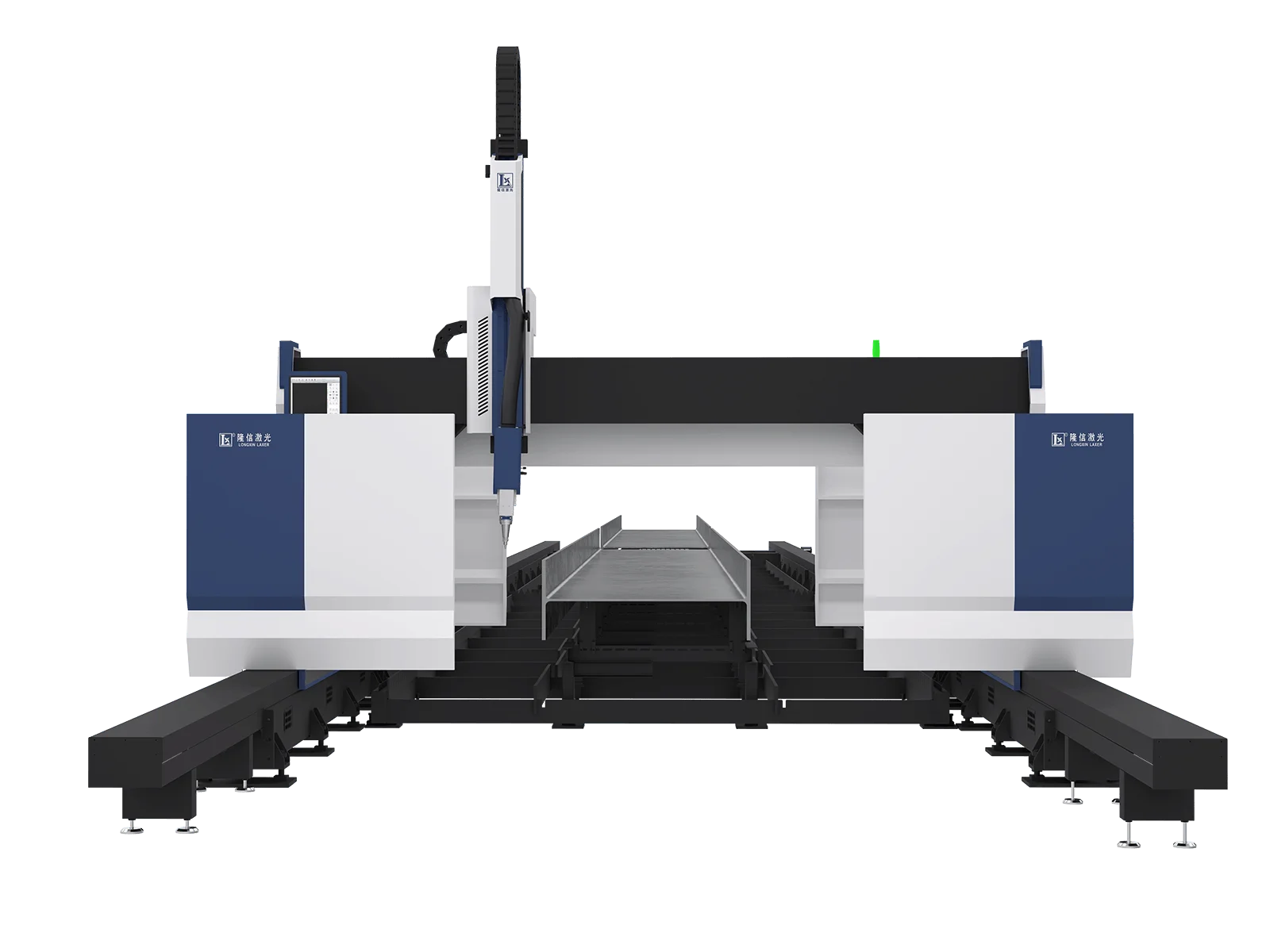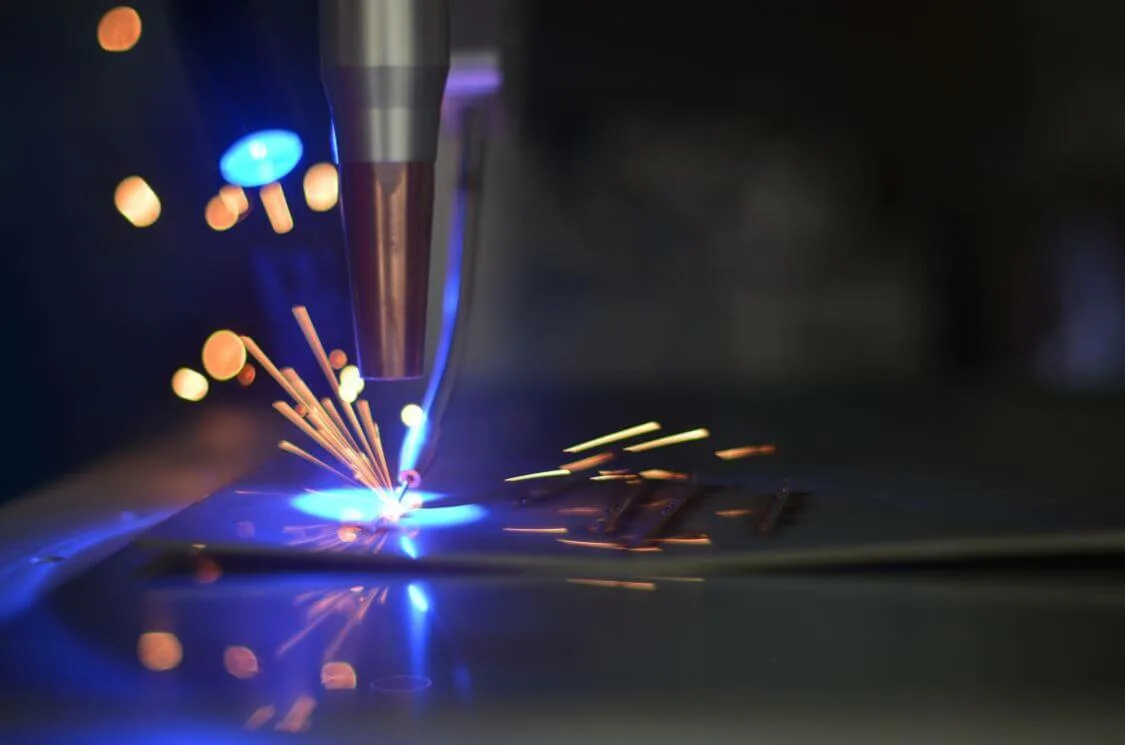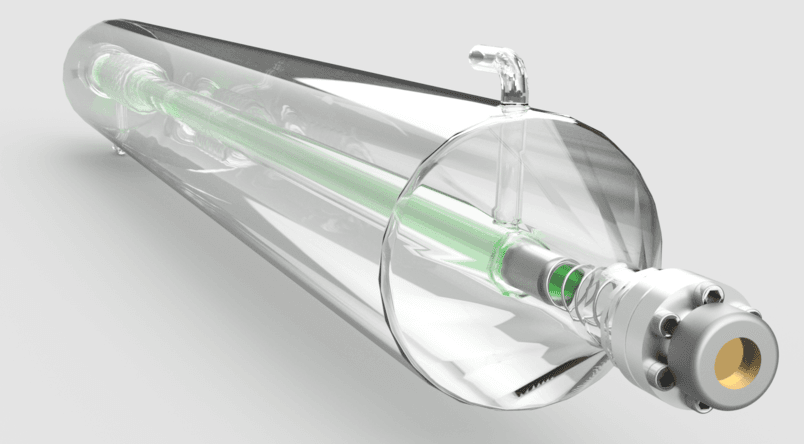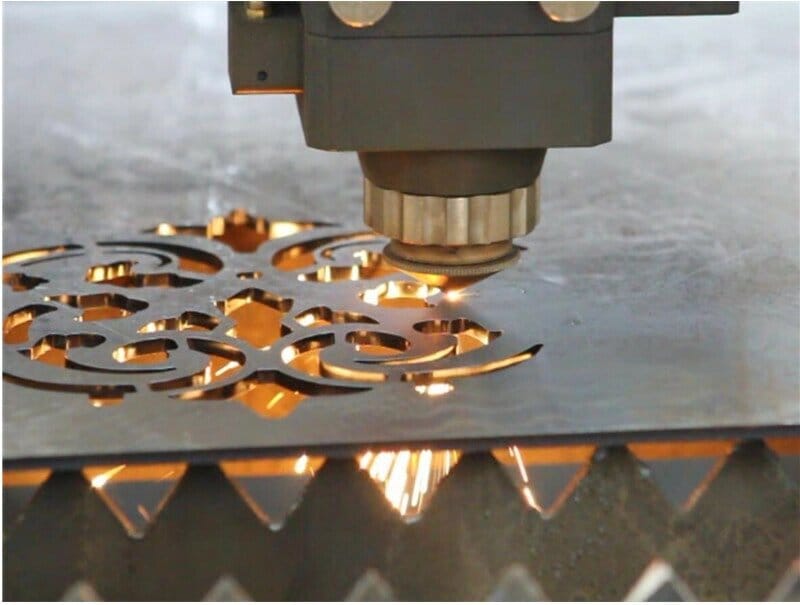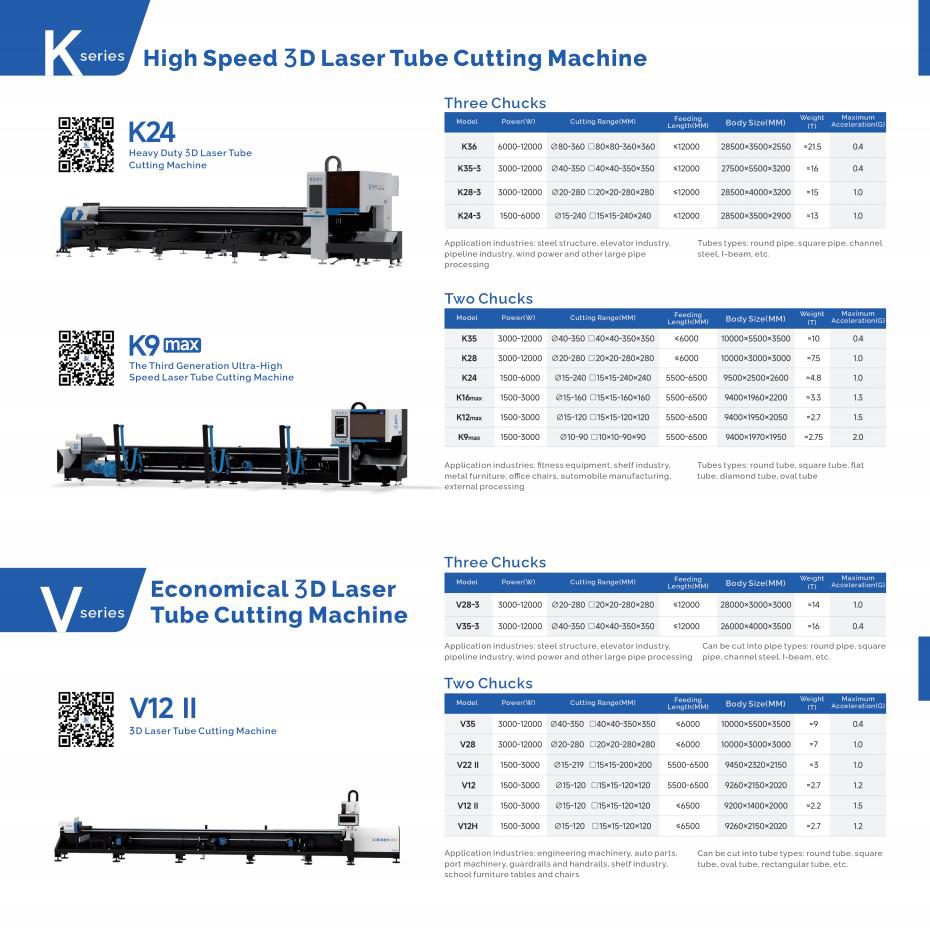The importance of 5-axis laser cutting in modern production is significant. It represents a move towards innovation, efficiency, and perfection in various industries. This article explores 5-axis laser cutting, including its features, applications, and benefits. We will compare it to conventional 3D laser cutting and discuss factors that affect its cost. Additionally, we will highlight how these advanced machines meet complex cutting needs, benefiting engineers, designers, and manufacturers. By the end of this article, you will have a comprehensive understanding of 5-axis laser cutting, from its mechanics to its industry contributions.
What is 5-axis Laser Cutting?
5-axis laser cutting is an advanced CNC (computer numerical controlled) manufacturing process that significantly enhances the capabilities of traditional laser cutting systems. This technology allows the laser head to move across five different axes simultaneously, providing the ability to cut complex shapes and geometries with high precision.
Overview of 5-axis Laser Cutting Technology
The key to 5-axis laser cutting is the addition of two rotational axes, known as the A-axis and B-axis, to the standard three linear axes of X, Y, and Z. These additional axes enable the cutting head to rotate and tilt while maneuvering around the workpiece, which allows for cutting from virtually any angle. The movement along these five axes includes:
- X-Axis: Horizontal motion left and right
- Y-Axis: Horizontal motion front and back
- Z-Axis: Vertical motion up and down
- A-Axis: Rotation around the X-axis
- B-Axis: Rotation around the Y-axis
This capability not only facilitates the cutting of more intricate designs but also significantly reduces the need for multiple setups, thus enhancing production efficiency and reducing the likelihood of errors.
Comparison with 3-axis and 4-axis Laser Cutters
Compared to 3-axis laser cutters, which operate solely on the X, Y, and Z axes without the ability to tilt or rotate the cutting table, 5-axis laser cutting offers a substantial improvement in flexibility and precision. 3-axis machines typically require the workpiece to be manually repositioned for different cutting angles, which can be time-consuming and prone to alignment errors.
On the other hand, 4-axis laser cutting adds limited rotational movement but does not provide the same level of versatility as 5-axis machines. While 4-axis technology allows for some angled cuts, it still requires additional setups for more complex geometries.
5-axis laser cutting machines overcome these limitations by enabling the cutting head to approach the part from all directions in a single setup. This not only ensures greater precision but also allows for the creation of complex parts that would be difficult or impossible to achieve with fewer axes. Moreover, the ability to drill holes from multiple angles without the need to reposition the workpiece makes 5-axis laser cutting particularly valuable in industries requiring high precision and efficiency, such as aerospace and medical device manufacturing.
In summary, 5-axis laser cutting represents a significant advancement over traditional 3-axis and 4-axis methods, offering enhanced capabilities in cutting complex three-dimensional parts with high precision and efficiency.
The Impact of 5-Axis Laser Cutting in Modern Manufacturing
In the evolving landscape of manufacturing and design, precision and flexibility in cutting techniques are paramount. At the forefront of these technological advancements stands 5-axis laser cutting, a method that revolutionizes how materials are shaped and refined.
Unparalleled Accuracy and Intricacy:
- Extends beyond traditional 3D cutting capabilities.
- Offers superior accuracy in crafting complex geometries.
Broad Applications:
- Used in aerospace for critical component fabrication.
- Essential in creating intricate jewelry designs.
Significant Advancements:
- Represents a leap towards innovation and efficiency.
- Pivotal in pushing the boundaries of manufacturing possibilities.
Why 5-Axis Laser Cutting Matters:
- Precision: Achieves higher precision levels than many other cutting methods, crucial for industries demanding exact specifications.
- Flexibility: Adaptable to various materials and complex shapes, enhancing design possibilities.
- Efficiency: Streamlines production processes, reducing waste and improving overall manufacturing efficiency.
Key Features of 5-axis Laser Cutting Machines
5-axis laser cutting machines represent a significant leap in manufacturing technology, offering a range of features that enhance precision, efficiency, and versatility in cutting applications. These machines are particularly renowned for their advanced capabilities and detailed specifications that cater to complex manufacturing needs across various industries.
Detailed specifications of 5-axis machines
The 5-axis laser cutting machines are equipped with a robust set of specifications that ensure high precision and operational efficiency. Key specifications include a laser oscillator with a power output of 3300W, a hard disk capacity of 8GB, and advanced positioning accuracy of ±0.03mm per 300mm. These machines also feature a cutting conditions library and a high-pressure gas assist system known as “Superior Cut.” The structural design includes a 5-axis joystick for digitizing and a CMM-type teaching probe, enhancing the machine’s usability and precision.
Operational capabilities are further supported by a drive mechanism using ball screws and a guide mechanism with linear ball guides, ensuring smooth and accurate movement. The machine’s rapid feed rates reach up to 40,000mm per minute on the X and Y axes and 30,000mm per minute on the Z-axis, with cutting feed rates also maintaining high speeds, enhancing productivity and reducing cycle times.
Advanced cutting capabilities
5-axis laser cutting machines excel in their ability to produce complex geometries with high precision. These machines can manipulate the laser along five different axes—X, Y, Z, and two rotational axes (A-axis and B-axis). This multi-axis capability allows for intricate cutting angles and complex part geometries that are difficult to achieve with traditional 3-axis systems. The additional axes enable the machine to approach the workpiece from virtually any angle, reducing the need for multiple setups and minimizing handling errors.
The technology supports cutting a wide variety of materials, including metals, plastics, and composites, making it suitable for industries like aerospace, automotive, and medical devices. The ability to switch between materials with minimal downtime is crucial for businesses that require flexibility in their production processes.
Furthermore, 5-axis machines enhance productivity by allowing for lights-out manufacturing, where operations can continue without human intervention overnight or over the weekend. This capability not only increases throughput but also reduces labor costs, enabling manufacturers to maintain a competitive edge in the market.
In summary, 5-axis laser cutting machines are equipped with advanced technological features that significantly improve the precision, efficiency, and versatility of cutting processes. These machines are pivotal in industries where complex geometries and high accuracy are crucial, providing substantial benefits in terms of production speed, cost-effectiveness, and material handling.
Applications and Industries
Automotive
5-axis laser cutting is revolutionizing the automotive industry by enhancing the precision and efficiency of manufacturing processes. This technology is particularly effective for cutting and shaping complex parts such as chassis, suspension systems, door panels, and engine components. The ability to process a wide range of materials, including metals and composites, allows for the production of lightweight yet durable parts. Additionally, the integration of thermoforming technology with 5-axis laser cutting is setting new standards in the manufacture of high-end and energy-efficient vehicles, reflecting a significant advancement in automotive design and production.
Aerospace
In the aerospace sector, the demand for components that combine lightweight characteristics with high strength is critical. 5-axis laser cutting meets these requirements by facilitating the precise cutting of advanced materials, such as titanium and Inconel alloys, used in manufacturing parts like turbine blades and structural components. The technology’s capability to maintain material integrity during the cutting process is vital for ensuring the performance and safety of aerospace components. The precision and versatility provided by 5-axis laser cutting have made it an indispensable tool in the aerospace industry, significantly enhancing both the production speed and cost-efficiency.
Medical
The medical industry benefits greatly from the high precision and repeatability of 5-axis laser cutting, especially in the production of complex medical devices and implants. This technology is crucial for manufacturing items like stents and orthopedic implants, where utmost accuracy is required to ensure patient safety and device functionality. The ability to work with diverse materials and the precision in cutting intricate designs are why 5-axis laser cutting is a preferred technology in medical device manufacturing, aiding in the development of more effective and innovative medical treatments.
Jewelry
In the jewelry industry, 5-axis laser cutting allows for the creation of intricate designs that are difficult or impossible to achieve with traditional crafting techniques. The precision of this technology enables jewelers to cut detailed patterns and complex shapes in precious metals, enhancing the artistry and uniqueness of jewelry pieces. The use of laser cutting extends to engraving and marking, providing durable and precise results that are essential for custom designs and personalization.
Learning and Development
5-axis laser cutting also plays a crucial role in educational and professional development settings, particularly in sectors that require prototyping and experimental designs. This technology supports the rapid creation of complex models and parts, facilitating hands-on learning and innovation. In R&D environments, 5-axis laser cutting expedites the development process, allowing for swift iterations and refinements, which is essential for advancing technology and learning applications.
Benefits of 5-axis Laser Cutting
3D Laser Cutting
5-axis laser cutting machines introduce a significant advancement in the ability to handle complex shapes and contours with unparalleled precision. This technology allows for intricate cutting, such as angular holes and complex geometries, that would be challenging or impossible with traditional 2D cutting methods. The integration of CAD software further enhances the process, guiding the laser to execute precise cuts, down to about 25 microns, which is approximately a quarter of the width of a human hair.
Improved Cutting Accuracy and Precision
The precision of 5-axis laser cutting is a major benefit, especially when compared to traditional cutting methods. These machines can achieve a cutting accuracy of about ±0.0005 inches, ensuring that each piece is cut exactly to specification with minimal variation. The ability to cut from virtually any angle without the need to reposition the workpiece multiple times reduces the potential for errors, thereby maintaining the integrity and quality of the material.
Increased Productivity and Reduced Costs
5-axis laser cutting enhances productivity by enabling faster and more efficient cutting processes. The technology allows for a single setup for multiple cuts, which not only speeds up production but also reduces labor costs. By minimizing the need for secondary operations and multiple setups, manufacturers can achieve faster turnaround times and lower production costs. Additionally, the capability of these machines to operate with minimal human intervention supports lights-out manufacturing, further increasing throughput and reducing operational costs.
These benefits underscore the transformative impact of 5-axis laser cutting technology in various industries, from automotive to aerospace, where precision, efficiency, and cost-effectiveness are paramount.
Conclusion
5-axis laser cutting represents a major technological advancement in manufacturing, offering superior precision and efficiency over traditional 3D cutting methods. This technology allows for the creation of complex geometries with unmatched accuracy, making it essential for industries such as aerospace, automotive, medical devices, and jewelry design. By reducing the need for multiple setups and minimizing errors, 5-axis laser cutting enhances productivity and lowers costs. As research and development continue, the potential of this technology to revolutionize manufacturing processes grows, promising significant improvements in efficiency, material handling, and design complexity.
